2nd AUGUST 2015 ( 1st SUNDAY OF AUGUST ) INTERNATIONAL FRIENDSHIP DAY SINCE 1958
Friendship
From Wikipedia, the free encyclopedia
"Friend" redirects here. For other uses, see Friends (disambiguation) and Friendship (disambiguation).
Friendship is a relationship of mutual affection between two or more people.[1] Friendship is a stronger form of interpersonal bond than an association. Friendship has been studied in academic fields such as sociology, social psychology, anthropology, and philosophy. Various academic theories of friendship have been proposed, including social exchange theory, equity theory, relational dialectics, and attachment styles. A World Happiness Database study found that people with close friendships are happier.[2]
Although there are many forms of friendship, some of which may vary from place to place, certain characteristics are present in many types of friendship. Such characteristics include affection, sympathy, empathy, honesty,altruism, mutual understanding and compassion, enjoyment of each other's company, trust, and the ability to be oneself, express one's feelings, and make mistakes without fear of judgment from the friend.
While there is no practical limit on what types of people can form a friendship, friends tend to share common backgrounds, occupations, or interests, and have similar demographics.
Contents
[hide]Developmental psychology[edit]
In the typical sequence of an individual's emotional development, friendships come after parental bonding and before pair bonding. In the intervening period between the end of early childhood and the onset of full adulthood, friendships are often the most important relationships in the emotional life of the adolescent, and are often more intense than relationships later in life.[3] The absence of friends can be emotionally damaging.[4]
The evolutionary psychology approach to human development has led to the theory of Dunbar's number, proposed by British anthropologist Robin Dunbar. He theorized that there is a limit of approximately 150 people with whom a human can maintain stable social relationships.[5]
Childhood[edit]
In childhood, friendships are often based on the sharing of toys, and the enjoyment received from performing activities together. These friendships are maintained through affection, sharing, and creative playtime. While sharing is difficult for children at this age, they are more likely to share with someone they consider to be a friend (Newman & Newman, 2012).[full citation needed] As children mature, they become less individualized and are more aware of others. They begin to see their friends' points of view, and enjoy playing in groups. They also experience peer rejection as they move through the middle childhood years. Establishing good friendships at a young age helps a child to be better acclimated in society later on in their life (Newman & Newman, 2012).[full citation needed]. In a 1975 study,[6] Bigelow and La Gaipa found that expectations for a "best friend" become increasingly complex as a child gets older. The study investigated such criteria in a sample of 480 children between the ages of six and fourteen. Their findings highlighted three stages of development in friendship expectations. In the first stage, children emphasized shared activities and the importance of geographical closeness. In the second, they emphasized sharing, loyalty and commitment. In the final stage, they increasingly desired similar attitudes, values and interests. According to Berndt, children prize friendships that are high in prosocial behavior, intimacy, and other positive features; they are troubled by friendships that are high in conflict, dominance, rivalry, and other negative features. High-quality friendships have often been assumed to have positive effects on many aspects of children's social development. Perceived benefits from such friendships include enhanced social success, but they apparently do not include an effect on children's general self-esteem. Numerous studies with adults suggest that friendships and other supportive relationships do enhance self-esteem (Berndt, 2002).[full citation needed] Other potential benefits of friendship include the opportunity to learn about empathy and problem solving.[7] Coaching from parents can be useful in helping children to make friends. Eileen Kennedy-Moore describes three key ingredients of children's friendship formation: (1) openness, (2) similarity, and (3) shared fun.[8][9][10] Parents can also help children understand social guidelines they haven't learned on their own.[11] Drawing from research by Robert Selman[12] and others, Kennedy-Moore outlines developmental stages in children's friendship, reflecting an increasing capacity to understand others' perspectives: "I Want It My Way", "What's In It For Me?", "By the Rules", "Caring and Sharing", and "Friends Through Thick and Thin."[13]
Adolescence[edit]
A study examined over 9,000 American adolescents to determine how their engagement in problem behavior (such as stealing, fighting, truancy) was related to their friendships. Findings indicated that adolescents were less likely to engage in problem behavior when their friends did well in school, participated in school activities, avoided drinking, and had good mental health. The opposite was found regarding adolescents who did engage in more problem behavior. Whether adolescents were influenced by their friends to engage in problem behavior depended on how much they were exposed to those friends, and whether they and their friendship groups "fit in" at school (Crosnoe, R., & Needham, B., 2004).[full citation needed]
A study by researchers from Purdue University found that friendships formed during post-secondary education last longer than friendships formed earlier.[14]
Adulthood[edit]
Life events such as marriage, parenthood, and accelerated career development can complicate friendships in the transition from young adulthood to middle adulthood. After marriage, both women and men report having fewer friends of the opposite sex (Friendships, 2012).[full citation needed]
Adults may find it particularly difficult to maintain meaningful friendships in the workplace. "The workplace can crackle with competition, so people learn to hide vulnerabilities and quirks from colleagues. Work friendships often take on a transactional feel; it is difficult to say where networking ends and real friendship begins."[15] Most adults value the financial security of their jobs more than friendship with coworkers.[16]
The majority of adults have an average of two close friends.[17]
Old age[edit]
As family responsibilities and vocational pressures become less, friendships become more important.[18] Among the elderly, friendships can provide links to the larger community; especially for people who cannot go out as often, interactions with friends allow for continued societal interaction. Additionally, older adults in declining health who remain in contact with friends show improved psychological well-being.
Although older adults prefer familiar and established relationships over new ones, friendship formation can continue in old age. With age, elders report that the friends to whom they feel closest are fewer in number and live in the same community. They tend to choose friends whose age, sex, race, ethnicity, and values are like their own. Compared with younger people, fewer older people report other-sex friendships. Older women, in particular, have more secondary friends—people who are not intimates, but with whom they spend time occasionally, such as in groups that meet for lunch or bridge.
Life cycle[edit]
Making a friend[edit]
Three significant factors make the formation of a friendship possible:
- proximity, which means being near enough to see each other or do things together;
- repeatedly encountering the person informally and without making special plans to see each other; and
- opportunities to share ideas and personal feelings with each other.[19]
Ending a friendship[edit]
Friendships end for many different reasons. Sometimes friends move away from each other and are forced to move on due to the distance. As long as the two people have met face-to-face in the past, however, digital technology has made geographic distance less of an obstacle to maintaining an existing friendship than it would have been previously. Sometimes divorce causes an end to friendships, as people drop one or both of the divorcing people. At a younger age friendships may end as a result of acceptance into new social groups. (Friendships, 2009; Berry, 2012)
Friendships may end by fading quietly away or may end suddenly. How and whether to talk about the end of a friendship is a matter of etiquette that depends on the circumstances.
Developmental issues[edit]
ADD and ADHD[edit]
Children with Attention deficit hyperactivity disorder (ADHD) may not have difficulty forming friendships, though they may have a hard time keeping them, due to impulsive behavior and hyperactivity. Children with Attention deficit disorder (ADD) may not have as much trouble keeping and maintaining friendships, though inattentiveness may complicate the processes.
Parents of children with ADHD worry about their children's ability to form long-lasting friendships. According to Edelman, "Making and keeping friends requires 'hundreds' of skills – talking, listening, sharing, being empathetic, and so on. These skills do not come naturally to children with ADD". Difficulty listening to others also inhibits children with ADD or ADHD from forming good friendships. Children with these disorders can also drive away others by "blurting out unkind comments". Their disruptive behavior can become too distracting to classmates.[20]
Autism[edit]
Children with autism spectrum disorders usually have some difficulty forming friendships. Certain symptoms of autism can interfere with the formation of interpersonal relations, such as a preference for routine actions, resistance to change, obsession with particular interests or rituals, and a lack of typical social skills. Children with autism spectrum disorders have been found to be more likely to be close friends of one person, rather than having groups of friends. Additionally, they are more likely to be close friends of other children with some sort of a disability.[21] A sense of parental attachment aids in the quality of friendships in children with autism spectrum disorders; a sense of attachment with one's parents compensates for a lack of social skills that would usually inhibit friendships.[22]
With time, moderation, and proper instruction, children with autism spectrum disorder are able to form friendships after realizing their own strengths and weaknesses. A study done by Frankel et al. showed that parental intervention and instruction plays an important role in such children developing friendships.[23] Along with parental intervention, school professionals play an important role in teaching social skills and peer interaction. Paraprofessionals, specifically one-on-one aides and classroom aides, are often placed with children with autism spectrum disorders in order to facilitate friendships and guide the child in making and maintaining substantial friendships.[24]
Although lessons and training may help peers of children with autism, bullying is still a major concern in social situations. According to Anahad O'Connor of The New York Times, bullying is most likely to occur against autistic children who have the most potential to live independently, such as those with Asperger syndrome. Such children are more at risk because they have as many of the rituals and lack of social skills as children with full autism, but they are more likely to be mainstreamed in school, since they are on the higher-functioning end of the autism spectrum. Children on the autism spectrum have more difficulty picking up on social cues of when they are maliciously being made fun of, so they do not always know when they are being bullied.[25]
Health[edit]
Conventional wisdom suggests that good friendships enhance an individual's sense of happiness and overall well-being. Indeed, a number of studies have found that strong social supports improve a woman's prospects for good health and longevity. Conversely, loneliness and a lack of social supports have been linked to an increased risk of heart disease, viral infections, and cancer, as well as higher mortality rates overall. Two researchers have even termed friendship networks a "behavioral vaccine" that boosts both physical and mental health.[26]
While there is an impressive body of research linking friendship and health, the precise reasons for the connection remain unclear. Most of the studies in this area are large prospective studies that follow people over a period of time, and while there may be acorrelation between the two variables (friendship and health status), researchers still do not know if there is a cause and effect relationship, such as the notion that good friendships actually improve health. A number of theories have attempted to explain this link. These theories have included that good friends encourage their friends to lead more healthy lifestyles; that good friends encourage their friends to seek help and access services when needed; that good friends enhance their friends' coping skills in dealing with illness and other health problems; and that good friends actually affect physiological pathways that are protective of health.[27]
Quality[edit]
| This section requires expansionwith: additional sourcing and a variety of viewpoints.. (April 2015) |
In Diderot's Encyclopedie his definition offers an early modern conception of good friendship in the 18th century. He writes:
"Friendship is nothing other than the practice of maintaining a decent and pleasant commerce with someone . Is friendship no more than that? Friendship , it will be said, is not limited to those terms; it goes beyond those narrow boundaries. But those who make this observation do not consider that two people do not, without being friends, maintain a connection that has nothing incorrect about it and that gives them reciprocal pleasure. The commerce that we may have with men involves either the mind or the heart. The pure commerce of the mind is called acquaintance ; the commerce in which the heart takes an interest because of the pleasure it derives from it is friendship . I see no idea more accurate and more suitable for explaining all that friendship is in itself and likewise all its properties." [28]
The qualities that make up a good friendship have changed over time. Presently, friendship has two dimensions: quality and conflict (Demir, 2007).[full citation needed] The quality of friendship is important for a person's well-being. High quality friendships have good ways of resolving conflict, ultimately leading to stronger and healthier relationships. Good friendship has been called "life enhancing" (Helm, 2012).[full citation needed] Engaging in activities with friends intensifies pleasure and happiness. The quality of friendships relates to happiness because friendship "provides a context where basic needs are satisfied" (Demir, 2010).[full citation needed] Quality friendships lead an individual to feel more comfortable with his or her personal identity. Higher friendship quality directly contributes to self-esteem, self-confidence, and social development (Berndt, 2002).[full citation needed]
Cultural variations[edit]
Ancient Greece[edit]
Friendship was a topic of moral philosophy greatly discussed by Plato, Aristotle, and Stoics. The topic was less discussed in the modern era, until the re-emergence of contextualist and feminist approaches to ethics.[29] In Ancient Greece, openness in friendship was seen as an enlargement of the self. Aristotle wrote, "The excellent person is related to his friend in the same way as he is related to himself, since, a friend is another self; and therefore, just as his own being is choiceworthy for him, the friend's being is choice-worthy for him in the same or a similar way."[30] In Ancient Greek, the same word ("philos") was used for "friend" and "lover".[31]
Central Asia[edit]
In Central Asia, male friendships tend to be reserved and respectful in nature. They may use nicknames and diminutive forms of their first names.
East Asia[edit]
The respect that friends have in East Asian culture is understood to be formed from a young age. Different forms of relationships in social media and online chats are not considered an official friendship in East Asian culture. Both female and male friendships in East Asia start at a younger age and grow stronger through years of schooling and working together. Different people in East Asian culture have a close, tight knit, group of friends that they call their "best friends." In the United States, many people refer to multiple people as their "best friends", as compared to East Asian culture, where best friends are the 2-3 people closest to a particular person. Being someone's best friend in East Asian culture is considered an honor and privilege. In a Chinese context, there is a very strong orientation towards maintaining and enhancing interpersonal relationships. The relationships between friends in East and Central Asian culture holds a tight bond that is usually never broken until someone geographically moves to another part of the county or out of the country.[32]
Germany[edit]
Germans typically have relatively few friends, although their friendships typically last a lifetime, as loyalty is held in high regard. German friendships provide a substantial amount of commitment and support. Germans may appear aloof to people from other countries, as they tend to be cautious and keep their distance when it comes to developing deeper relationships with new people. They draw a strong distinction between their few friends and their many associates, co-workers, neighbors, and others. A relationship's transition from one of associates to one of friends can take months or years, if it ever happens.[33]
Islamic cultures[edit]
In Islamic cultures, friendship is also known as companionship or ashab. The concept is taken seriously, and numerous important attributes of a worthwhile friend have emerged in Islamic media, such as the notion of a righteous (or saalih) person, who can appropriately delineate between that which is good and that which is evil. Concordance with the perspectives and knowledge of others is considered to be important; forgiveness regarding mistakes and loyalty between friends is emphasized, and a "love for the sake of Allah" is considered to be a relationship of the highest significance between two humans.[34]
Middle East[edit]
It is believed that in some parts of the Middle East (or Near East), friendship is more demanding when compared with other cultures; friends are people who respect each other, regardless of shortcomings, and will make personal sacrifices in order to assist another friend, without considering the experience an imposition.[35]
Many Arab people perceive friendship seriously, and deeply consider personal attributes such as social influence and the nature of a person's character before engaging in such a relationship.[35]
Russia[edit]
Many of the qualities of modern Russia's culture date back to Soviet times. Scarcity in the Soviet Union led people had to create relationships with people in certain businesses in order to get the things they needed, such as ahospital employee to help obtain medical attention. Such practices led to a community spirit and interpersonal connections (Babaeva 2010).[full citation needed] Many of these practices have continued to the present day. Inefficiencies on the part of the government, so Russians may find it easier to rely on their friends and family than on any company or business. These traditional types of relationships are valued greatly in Russia (Babaeva 2010).[full citation needed]
Other conditions in the Soviet period made it harder for Russians to form relationships. Confiding in another person opened the risk of being reported to the state, especially for dissent. As in Germany, people in Soviet communities had very few friends, but the friends they did have were extremely close. These trends have continued in modern Russia (Sheets & Lugar 2005).[full citation needed]
United States[edit]
In the United States, many types of relationships are deemed friendships. From the time children enter elementary school, many teachers and adults call their peers "friends" to children, and in most classrooms or social settings, children are instructed as to how to behave with their friends, and are told who their friends are (Stout 2010).[full citation needed] This type of open approach to friendship has led many Americans, adolescents in particular, to designate a "best friend" with whom they are especially close (Stout 2010).[full citation needed] Many psychologists see this term as dangerous for American children, because it allows for discrimination and cliques, which can lead to bullying (Stout 2010).[full citation needed]
For Americans, friends tend to be people whom they encounter fairly frequently, and that are similar to themselves in demographics, attitude, and activities (Sheets & Lugar 2005).[full citation needed] While many other cultures value deep trust and meaning in their friendships, Americans will use the word "friend" to describe most people who have such qualities (Stout 2010).[full citation needed] There is also a difference in the US between men and women who have friendships with the same sex. According to research, American men have less deep and meaningful friendships with other men. In the abstract, many men and women in the United States have similar definitions of intimacy, but women are more likely to practice intimacy in friendships (Yugar & Shapiro 2001).[full citation needed] Many studies have also found that Americans eventually lose touch with friends. This can be an unusual occurrence in many other cultures (Sheets & Lugar 2005).[full citation needed]
According to a study documented in the June 2006 issue of the American Sociological Review, Americans are thought to be suffering a loss in the quality and quantity of close friendships since at least 1985.[36][37] The study states that one quarter of all Americans have no close confidants, and that the average total number of confidants per person has dropped from four to two.
Divorce also contributes to the decline in friendship among Americans. "In international comparisons, the divorce rate in the United States is higher than that of 34 other countries including the United Kingdom, Canada, New Zealand, and Australia" (Newman & Newman, 2012 p. 475).[full citation needed] In divorce, many couples end up losing friends through the process, as certain friends "side with" one member of the relationship and lose the other.
The advance of technology has also been blamed for declining friendships in the United States. Ethan J. Leib, author of the book Friend vs. Friend and law professor at the University of California-Hastings, suggests that longer hours of work and a large amount of online communication take away from personal communication, making it harder to form friendships. Social media such as Facebook and Twitter have also led to a decrease in the amount of personal communication experienced in everyday life, and serves to make emotional attachments more difficult to achieve. (Newman & Newman)[full citation needed] (Berry, 2012)[full citation needed] (Freeman, 2011).[full citation needed]
Paul Hollander wrote in Soviet and American Society (1973): In American society the term “friendship” is applied to relationships which in the Soviet Union (and much of Europe) would be called acquaintanceships. Many students and observers of American society, native and foreign alike, have suggested that the friendship of Americans tend to be superficial, short-lived, and limited in intimacy. Friendships in America do not often become life-long exchanges of solidarity and moral and emotional support.
Types[edit]
- Agentic friendship
- In an agentic friendship, both parties look to each other for help in achieving practical goals in their personal and professional lives.[38] Agentic friends may help with completing projects, studying for an exam, or with moving a friend from dwelling to dwelling. They value sharing time together, but only when they have time available to help each other. These relationships typically do not include the sharing of emotions or personal information.
- Best friend (or close friend)
- Best friends share extremely strong interpersonal ties with each other.See also: Best friends forever
- Blood brother or sister
- This term can either refer to people related by birth or to friends who swear loyalty by mixing their blood together. The latter usage has been practiced throughout history, but is rarely continued today due to the dangers of blood-borne diseases.
- Boston marriage
- This antiquated American term was used during the 19th and 20th centuries to denote two women who lived together in the same household independent of male support. These relationships were not necessarily sexual. The term was used to quell fears oflesbians after World War I.[clarification needed]
- Bromance
- A portmanteau of bro and romance, a bromance is a close, non-sexual relationship between two or more men.
- Buddy
- Sometimes used as a synonym for friend generally, "buddy" can specifically denote a friend or partner with whom one engages in a particular activity, such as a "study buddy."
- Casual relationship or "friends with benefits"
- Also referred to as a "hook-up," this term denotes a sexual or near-sexual relationship between two people who do not expect or demand to share a formal romantic relationship.
- Communal friendship
- As defined by Steven McCornack, this is a friendship in which friends gather often to provide encouragement and emotional support in times of great need. This type of friendship tends to last only when the involved parties fulfill the expectations of support.[38]
- Comrade
- This term denotes an ally, friend, or colleague, especially in a military or political context. Comradeship may arise in time of war, or when people have a mutual enemy or even a common goal, in circumstances where ordinary friendships might not have formed.[39] In English, the term is associated with the Soviet Union, in which the Russian equivalent term, tovarishch (Russian: това́рищ), was used as a common form of address.
- Family friend
- This term can denote the friend of a family member or the family member of a friend.
- Frenemy
- A portmanteau of the words "friend" and "enemy," the term "frenemy" refers to either an enemy disguised as a friend (a proverbial wolf in sheep's clothing) or a person who is both a friend and a rival. This may take the form of a love–hate relationship. The term was reportedly coined by a sister of author and journalist Jessica Mitford in 1977 and popularized more than twenty years later on the third season of Sex and the City. One study by psychologist Julianne Holt-Lunstad found that unpredictable love–hate relationships can lead to elevations in blood pressure. In a previous study, the same researcher found that blood pressure is higher around people for whom one has mixed feelings than it is around people whom one clearly dislikes.[40]
- Imaginary friend
- An imaginary friend is a non-physical friend, usually of a child. These friends may be human or animal, such as the human-sized rabbit in the 1950 Jimmy Stewart film Harvey. Creation of an imaginary friend may be seen as bad behavior or even taboo, but is most commonly regarded as harmless, typical childhood behavior.[41]
- Internet relationship
- An internet friendship is a form of friendship or romance which takes place exclusively over the internet. This may evolve into a real-life friendship. Internet friendships are in similar context to pen pals. People in these friendships may not use their true identities; parties in an internet relationship may engage in catfishing.
- Mate
- Primarily used in the UK, Ireland, Australia, and New Zealand, "mate" is a same-sex friend, especially among males. In the UK, as well as Australia, the term also has been taken up by women.
- Cross-sex friendship
- Cross-sex friendships, which are nonsexual, are not always socially accepted. Although complications can arise in such relationships, cross-sex friendships can be strong and emotionally rewarding.[42][43]
- Pen pal
- Pen pals are people who have a relationship primarily through mail correspondence. They may or may not have met each other in person. This type of correspondence was encouraged in many elementary school children;[when?] it was thought that an outside source of information or a different person's experience would help the child become more worldly. In modern times, internet relationships have largely replaced pen pals, though the practice does continue.
In animals[edit]
Friendship is also found among animals of higher intelligence, such as higher mammals and some birds. Cross-species friendships are common between humans and domestic animals. Cross-species friendships may also occur between two non-human animals, such as dogs and cats.
A study conducted by Krista McLennan, a doctoral student at Northampton University, investigated friendship in cows. McLennan measured the heart rates of cattle on three separate occasions to determine their stress levels. In the first trial, the cows were isolated from the rest of their herd. The second trial penned the animal with another cow that they were familiar with. Finally, the third trial put two random cows together. Her research showed that the cows were much more stressed when alone or with an unfamiliar cow than they were with one of their friends. This supports the idea that cows are social animals, capable of forming close bonds with each other. McLennan suggests that if farmers group friends together, it could benefit the cows by reducing their stress, improving their overall health and even producing a greater milk yield.[44]
Friendship Day
From Wikipedia, the free encyclopedia
Not to be confused with National Best Friend Day.
| This article needs additional citations for verification. (July 2010) |
| International Friendship Day | |
|---|---|

A friendship bracelet is a bracelet given by one person (friend) to another as a symbol offriendship.
| |
| Official name | International Friendship Day |
| Also called | Friendship |
| Type | Historical |
| Date | varies: 30 July (UN), first Sunday of August |
| Frequency | annual |
| Related to | Friendship Love |
International Friendship Day is a day for celebrating friendship. The day has been celebrated in several southern South American countries for many years, particularly in Paraguay, where the first World Friendship Day was proposed in 1958.
Initially created by the greeting card industry, evidence from social networking sites shows a revival of interest in the holiday that may have grown with the spread of the Internet, particularly in India, Bangladesh, and Malaysia. Digital communication modes such as the Internet and mobile phones may be helping to popularize the custom, since greeting friends en masse is now easier than before. Those who promote the holiday inSouth Asia attribute the tradition of dedicating a day in honor of friends to have originated in the U.S. in 1935, but it actually dates from 1919. The exchange of Friendship Day gifts like flowers, cards and wrist bands is a popular tradition of this occasion.[1][2]
Friendship Day celebrations occur on different dates in different countries. The first World Friendship Day was proposed for 30 July in 1958, by the World Friendship Crusade.[3] On 27 April 2011 the General Assembly of the United Nations declared[4] 30 July as official International Friendship Day. However, some countries, including India,[5] celebrate Friendship Day on the first Sunday of August. In Oberlin, Ohio, Friendship Day is celebrated on 8 April each year.[6] It is one of the most popular events of the world especially to the youth community who want to dedicate this complete day to their most special friends by sharing friendship day quotes and playing games like the Invisible friend[7] (a variation of the popular Secret Santa).
History[edit]
Friendship Day was originally promoted by Joyce Hall, the founder of Hallmark cards in 1930, intended to be 2 August and a day when people celebrated their friendships by sending cards. The second of August was chosen as the centre of the largest lull between holiday celebrations. Friendship Day was promoted by the greeting card National Association during the 1920s but met with consumer resistance - given that it was too obviously a commercial gimmick to promote greetings cards. By the 1940s the number of Friendship Day cards available in the US had dwindled and the holiday largely died out there. There is no evidence to date for its uptake in Europe; however, it has been kept alive and revitalised in Asia, where several countries have adopted it.
In honor of Friendship Day in 1998, Nane Annan, wife of UN Secretary-General Kofi Annan, named Winnie the Pooh as the world's Ambassador of Friendship at the United Nations. The event was co-sponsored by the U.N. Department of Public Information and Disney Enterprises, and was co-hosted by Kathy Lee Gifford.
Some friends acknowledge each other with exchanges of gifts and cards on this day. Friendship bands are very popular in India, Nepal, Bangladesh and parts of South America.[1] With the advent of social networkingsites, Friendship Day is also being celebrated online.[2] The commercialization of the Friendship Day celebrations has led to some dismissing it as a "marketing gimmick". But nowadays it is celebrated on the first Sunday of August rather than 30 July. However, on 27 July 2011 the 65th Session of the United Nations General Assembly declared 30 July as "International Day of Friendship".[8]
The idea of a World Friendship Day was first proposed on 20 July 1958 by Dr. Ramon Artemio Bracho during a dinner with friends in Puerto Pinasco, a town on the River Paraguay about 200 miles north of Asuncion, Paraguay.[9]
Out of this humble meeting of friends, the World Friendship Crusade was born. The World Friendship Crusade is a foundation that promotes friendship and fellowship among all human beings, regardless of race, color or religion. Since then, 30 July has been faithfully celebrated as Friendship Day in Paraguay every year and has also been adopted by several other countries.[10]
The World Friendship Crusade has lobbied the United Nations for many years to recognise 30 July as World Friendship Day and finally on 20 May, General Assembly of the United Nations decided to designate 30 July as the International Day of Friendship; and to invite all Member States to observe the International Day of Friendship in accordance with the culture and customs of their local, national and regional communities, including through education and public awareness-raising activities.[8]
See also[edit]
- Female bonding - The development of friendships between women
- Fraternization
- Friend of a friend
- Intimate relationship
- Male bonding
- Platonic love
- Social network - The architecture of friendship
- The Four Loves
-
Not to be confused with National Best Friend Day. International Friendship Day is aday for celebrating friendship. The day has been celebrated in several7 KB (902 words) - 19:03, 2 August 2015
-
Little Friend" is the eleventh episode of the American television police procedural fantasy drama Awake, which originally aired on the National Broadcasting22 KB (2,679 words) - 19:57, 9 July 2015
- Friendship (redirect from Best friend (friendship))In a 1975 study, Bigelow and La Gaipa found that expectations for a "best friend" become increasingly complex as a child gets older. The study investigated44 KB (5,833 words) - 05:11, 1 August 2015
-
year and was unofficially named the Best Friend of Charleston. After its inaugural run on Christmas Day, the Best Friend was used in regular passenger service7 KB (725 words) - 15:32, 4 June 2015
- Jake Gyllenhaal (category Best Supporting Actor BAFTA Award winners)was "at least the best cop movie since James Gray's We Own the Night, and very likely since Antoine Fuqua's memorable Training Day (which, not coincidentally54 KB (4,436 words) - 22:17, 30 July 2015
- Muhammad Ali Jinnah (redirect from Jinnah Day)("Ruttie"), 24 years his junior. She was the fashionable young daughter of his friendSir Dinshaw Petit, of an elite Parsi family of Bombay. There was great opposition99 KB (12,785 words) - 04:49, 2 August 2015
-
present-day Wyoming, including the Grand Tetons, after joining F V. Hayden's Geological Survey in 1873. Today, he is considered the first national park ranger111 KB (12,511 words) - 03:55, 2 August 2015
-
For the British newscaster, see Bob Friend (newscaster). Robert Bartmess Friend(born November 24, 1930) is a former right-handed starting pitcher in13 KB (2,032 words) - 04:53, 2 July 2015
- Peter Sellers (category Best British Actor BAFTA Award winners)Sellers a Best Actor award at the 51st National Board of Review Awards; the London Critics Circle Film Awards Special Achievement Award, the Best Actor award117 KB (14,238 words) - 21:54, 15 July 2015
-
Review Awards were announced on January 3, 1972. Macbeth The Boy Friend OneDay in the Life of Ivan Denisovich The French Connection The Last Picture2 KB (131 words) - 01:44, 17 March 2013
-
wrecks, best suited for scuba dives. The Mandalay is at a shallower depth and is especially popular for snorkeling. Main article: National Register81 KB (9,876 words) - 19:22, 13 July 2015
- E.T. the Extra-Terrestrial (category Best Drama Picture Golden Globe winners)and the government. The concept for the film was based on an imaginary friendSpielberg created after his parents' divorce in 1960. In 1980, Spielberg56 KB (6,674 words) - 05:33, 31 July 2015
- Kangana Ranaut (category Best Actress National Film Award winners)(2007) and Fashion (2008). For the last of these, she won the National Film Award forBest Supporting Actress and a Filmfare Award in the same category68 KB (6,623 words) - 03:22, 2 August 2015
-
this April 22 Earth Day was focused on the United States, an organization launched by Denis Hayes, who was the original national coordinator in 1970,41 KB (4,917 words) - 19:32, 27 June 2015
- William Wilberforce (redirect from Wilberforce Day)by fellow members of the so-called Clapham Sect, among whom was his best friendand cousin Henry Thornton. Holding evangelical Christian convictions90 KB (10,963 words) - 05:41, 22 July 2015
- Kirsten Dunst (category Best Actress Empire Award winners)successful film of her career to date. She played Mary Jane Watson, the best friendand love interest of Peter Parker (Maguire). The film was directed by70 KB (5,709 words) - 09:45, 25 July 2015
-
meaning "friend". In the 1980s the Japanese National Confectionery Industry Association launched a successful campaign to make March 14 a "reply day", where79 KB (9,362 words) - 08:51, 27 July 2015
-
various strategic reasons why a team's best pitcher might not start on Opening Day. The Pirates have used 71 Opening Day starting pitchers since they began62 KB (2,071 words) - 04:40, 10 July 2015
- Jackie Robinson (category National Baseball Hall of Fame inductees)1954, Robinson had 62 runs, a .311 batting average, and 7 steals. His best day at the plate was on June 17, when he hit two home runs and two doubles127 KB (13,656 words) - 21:01, 1 August 2015
-
The National Film Award for Best Feature Film in English is one of the National Film Awards presented annually by the Directorate of Film Festivals, the18 KB (688 words) - 20:43, 7 January 2015











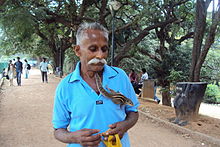
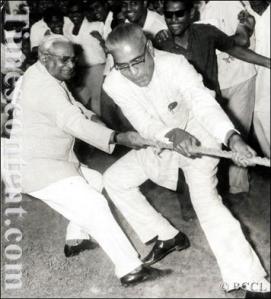
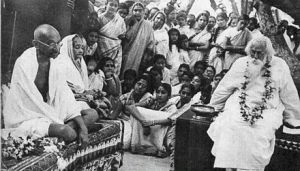











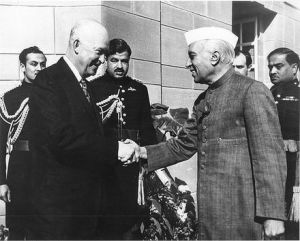
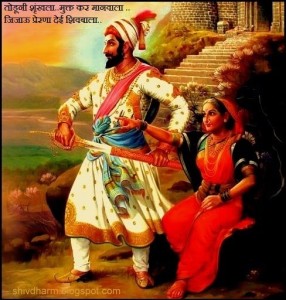
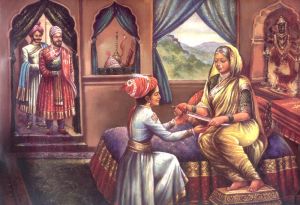


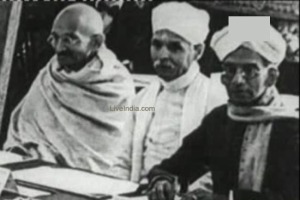
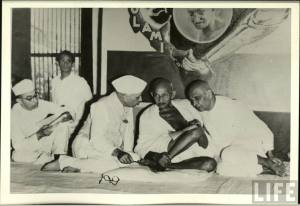

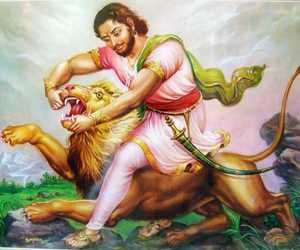

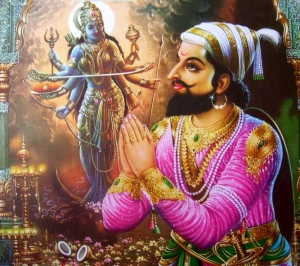
Happy friendship day from Toponwebs
ReplyDeleteFriendship Day Messages
ReplyDeleteFriendship Day Cards
Friendship Day Status
Friendship Day Wallpaper
Quotes Friendship Day
ReplyDeletehttps://friendshipday.info
Free Download Friendship Day Date
broadcasting telecast channels
http://skysportslivefootball.com
Futball live winner Prediction Schedule
Thanks for sharing a nice article such a wonderful site you have done a great job once more thanks a lot
ReplyDeleteBest Happy Friendship Day Quotes
This comment has been removed by the author.
ReplyDelete